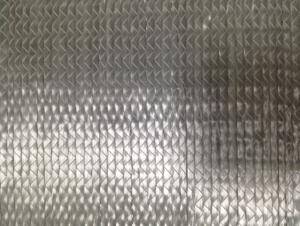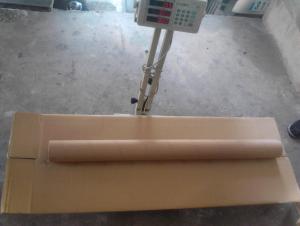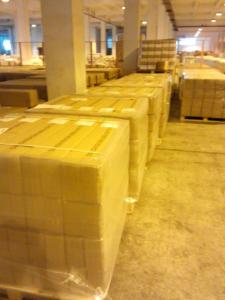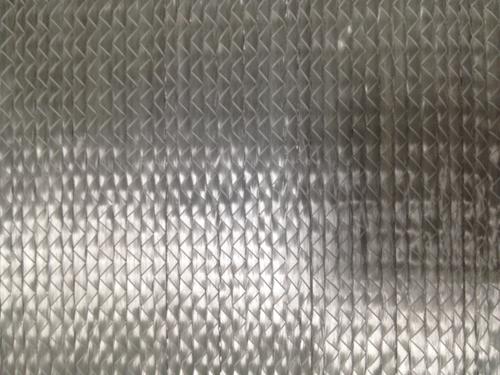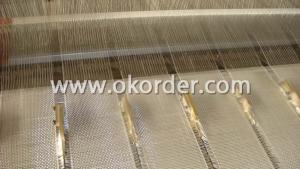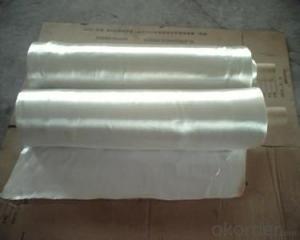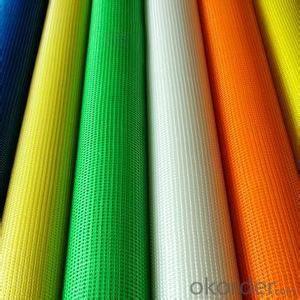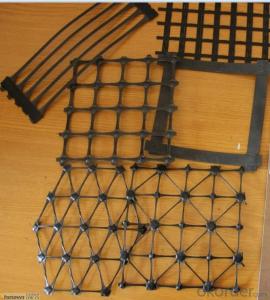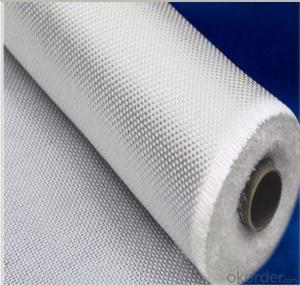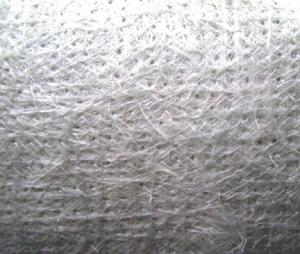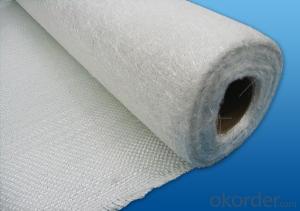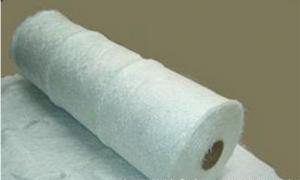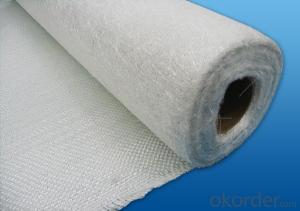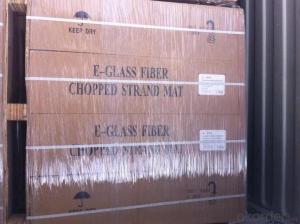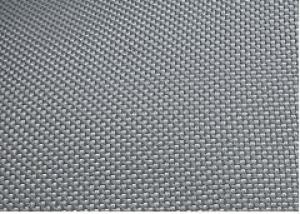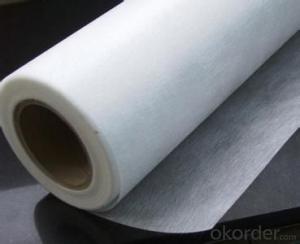Glass Fabric e-glass Stitch Combo Mat - LT
- Loading Port:
- China Main Port
- Payment Terms:
- TT or LC
- Min Order Qty:
- -
- Supply Capability:
- -
OKorder Service Pledge
OKorder Financial Service
You Might Also Like
Brief Introduction For E-GLASS STITCH COMBO MAT- LT:
Eglass stitched Combo Mat is a complex mat made by stitching together alayer of rovings consisting of parallel aligned rovings 0°,90°or ±45°and alayer of evenly distributed chopped strands.
E-glassstitched combo mat consists of two or more layers of fiber glass rovingswhich are stitch-bonded. one layer of rovings and differene layers of rovingscan be oriented differently and have different linear density. the rovingspecification, number of roving layers, mat width and roll diameter can becustomized as per requirement.
It’scompatible with UP, vinyl-ester, phenolic and epoxy resin.
Characteristics For E-GLASS STITCH COMBO MAT- LT
1. Manufactured by own factory
2. Good wet-out in resins
3. Good strand dispersion and uniform area weight.
Specification For E-GLASS STITCH COMBO MAT- LT
Specification | Woven roving (g/m2) | chopped(g/m2) | Polyester Yarn Density(g/m2) | total weight(g/m2) |
E300/300 | 308 | 302.25 | 6.3 | 616.55 |
E500/300 | 507 | 302.35 | 9.1 | 818.45 |
E500/450 | 507 | 458.17 | 9.1 | 974.27 |
E600/275 | 612 | 274.64 | 9.5 | 896.14 |
E600/300 | 612 | 305.15 | 9.5 | 926.65 |
E600/450 | 612 | 457.73 | 10.71 | 1080.44 |
E800/275 | 847 | 274.64 | 10.71 | 1132.35 |
E800/300 | 847 | 305.15 | 10.71 | 1162.86 |
FAQ For E-GLASS STITCH COMBO MAT- LT
a.Pacage
Each Eglass stitched Combo Mat is wound onto a paper tube The roll is wrapped up with plastic film,and then packed in a cardboard box. The rolls can be vertically or horizontally placed. For transportation, the rolls can be loaded into a container directly or on pallets.
b.Product storage:
Unless otherwise specified, CHEMICAL FIBER GRIDDING CLOTH should be stored in a dry, cool and rain-proof area. It is recommended that the room temperature and humidity should be always maintained at 15℃~35℃ and 50%~75% respectively.
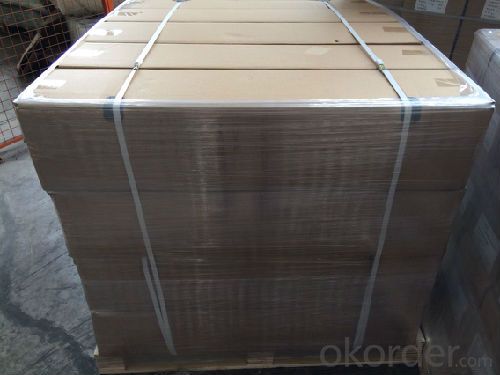
- Q: How strong is fiberglass fabric?
- Known for its exceptional strength and durability, fiberglass fabric is composed of woven glass fibers, resulting in a material that is both strong and flexible. The strength of the fabric can vary depending on factors such as the density of the weave and the specific type of glass used. Compared to traditional fabrics like cotton or polyester, fiberglass fabric is generally considered to be stronger. It possesses high tensile strength, meaning it can withstand significant pulling or stretching forces without breaking or tearing. Additionally, fiberglass fabric is highly resistant to heat, chemicals, and UV radiation, making it suitable for a wide range of applications. Due to its renowned strength, fiberglass fabric is the preferred choice in various industries including construction, automotive, aerospace, and marine.
- Q: Is fiberglass fabric resistant to moisture penetration?
- Yes, fiberglass fabric is resistant to moisture penetration. Fiberglass is made from thin strands of glass that are woven together to create a strong and durable fabric. The nature of glass fibers makes them highly resistant to moisture, as they do not absorb water or allow it to pass through easily. This makes fiberglass fabric an ideal material for applications where moisture resistance is important, such as in boat covers, outdoor furniture, and protective clothing. Additionally, fiberglass fabric is often used in areas where high humidity or water exposure is common, such as in bathrooms or swimming pools, due to its ability to resist moisture penetration.
- Q: Can fiberglass fabrics be used for clothing or fashion purposes?
- Fiberglass fabrics are not typically worn in everyday life, but they can be utilized for clothing and fashion purposes. They possess qualities such as strength, durability, and resistance to heat and chemicals, making them suitable for various applications in the fashion industry. For instance, they can be employed in crafting protective clothing for industrial workers or firefighters. Moreover, they can serve as a constituent in specialized sportswear, like helmets or shin guards. In high fashion, fiberglass fabrics can be integrated into designs to produce unique and cutting-edge garments. Nevertheless, it is crucial to note that direct contact with these fabrics may cause skin irritation. Thus, appropriate precautions and lining materials must be employed to ensure comfort and safety.
- Q: Are there any specific safety precautions to consider when working with fiberglass fabrics?
- Yes, there are several safety precautions to consider when working with fiberglass fabrics. Firstly, it is important to wear appropriate personal protective equipment (PPE) such as gloves, goggles, and a respirator. Fiberglass fibers can be irritating to the skin, eyes, and respiratory system, so it is crucial to minimize direct contact and inhalation of the fibers. Secondly, it is recommended to work in a well-ventilated area or use local exhaust ventilation to reduce the concentration of airborne fiberglass particles. This can help prevent the fibers from being inhaled and causing respiratory issues. Additionally, it is important to handle fiberglass fabrics with care to avoid creating dust or releasing loose fibers. Cutting or sanding fiberglass fabrics should be done in a controlled manner, using wet methods or dust collection systems to minimize airborne particles. When cleaning up after working with fiberglass fabrics, it is advisable to use a damp cloth or vacuum cleaner with a HEPA filter to capture any loose fibers. Dry sweeping or blowing with compressed air should be avoided as it can disperse the fibers into the air. It is also important to note that fiberglass fabrics should be stored in a dry area to prevent moisture absorption, which can affect their performance and durability. Overall, by following these safety precautions, individuals can minimize the potential health risks associated with working with fiberglass fabrics.
- Q: What are the different widths available for fiberglass fabric?
- Different applications and needs can be accommodated by various widths of fiberglass fabric. Fiberglass fabric is commonly found in widths ranging from 1 inch to 60 inches. Nevertheless, it is worth noting that the actual widths may vary depending on the manufacturer and the intended use of the fabric. For intricate repairs or reinforcing specific areas, narrower widths like 1 inch, 2 inches, or 4 inches are often preferred. These narrower widths are convenient for smaller projects or detailed work. They are also commonly utilized for wrapping pipes or small objects. On the other hand, wider widths such as 36 inches or 60 inches are typically employed for larger projects that require coverage of larger areas. These wider fabrics are frequently used in boat building, automotive repairs, or construction projects where a larger surface area needs reinforcement. In addition to the commonly available widths, there are also intermediate widths like 6 inches, 8 inches, or 12 inches. These intermediate widths offer a balance between the convenience of narrower widths and the efficiency of wider widths. When selecting the width of fiberglass fabric, it is vital to consider the specific requirements of your project. Factors to take into account include the size of the area to be covered, the level of reinforcement needed, and the ease of handling and application. Consulting with a supplier or manufacturer can be beneficial in determining the most suitable width for your specific needs.
- Q: What is the melting point of fiberglass fabric?
- The melting point of fiberglass fabric fluctuates based on the fabric's specific type and composition. Typically, fiberglass fabric possesses a melting point that spans from 1000 to 1400 degrees Celsius (or 1832 to 2552 degrees Fahrenheit). Nevertheless, it is crucial to acknowledge that fiberglass fabric typically begins to deteriorate and compromise its structural stability at temperatures considerably lower than its melting point. Consequently, it is advised to refrain from subjecting fiberglass fabric to elevated temperatures in order to avert any possible harm or safety risks.
- Q: Can fiberglass fabric be used for packaging?
- Yes, fiberglass fabric can be used for packaging in certain applications. Fiberglass fabric is known for its strength, durability, and resistance to heat and chemicals, making it suitable for protecting and securing various products during transportation and storage. It can be used to wrap fragile or sensitive items, such as electronics or glassware, providing a protective barrier against impact, moisture, and dust. Additionally, fiberglass fabric can be used as reinforcement material in packaging materials like tapes or straps, enhancing their strength and stability. However, it is important to consider the specific requirements of the packaging application and ensure that fiberglass fabric is the appropriate choice, as it may not be suitable for all types of products or packaging methods.
- Q: Can fiberglass fabric be used for insulation in oil and gas facilities?
- Yes, fiberglass fabric can be used for insulation in oil and gas facilities. Fiberglass fabric is a commonly used material for insulation due to its excellent thermal properties, resistance to high temperatures, and its ability to withstand harsh environments. It is non-combustible and can effectively prevent heat transfer, making it suitable for insulating pipes, tanks, and equipment in oil and gas facilities. Additionally, fiberglass fabric is lightweight, flexible, and easy to install, making it a practical choice for insulation in these facilities.
- Q: What are the main characteristics and differences between CEM-3 high thermal conductivity and aluminum substrate? Which kind of board is more advantageous to make lamps and lanterns?
- The aluminum substrate market is now chaotic, ordinary aluminum substrate thermal conductivity of less than 0.8, of course, genuine aluminum substrate can do 1.0~3.0, but the higher prices.
- Q: What are the different weaves available for fiberglass fabric?
- There are several different weaves available for fiberglass fabric, each with its own unique characteristics and uses. Some of the most common weaves include plain weave, twill weave, satin weave, and leno weave. Plain weave is the simplest and most common weave used for fiberglass fabric. It is characterized by an equal number of warp and weft yarns crossing over and under each other in a simple over-under pattern. This weave creates a strong and balanced fabric with good stability and durability. Twill weave is another popular option for fiberglass fabric. In this weave, the warp and weft yarns cross over and under each other in a diagonal pattern, creating a distinctive diagonal ribbing effect. Twill weave provides better drapability and flexibility compared to plain weave, making it suitable for applications that require greater conformability. Satin weave is a more complex weave that produces a smooth and shiny surface on the fabric. It is characterized by long floats of the warp or weft yarns, which means that fewer yarns are interlaced, resulting in a more flexible and lightweight fabric. Satin weave is often used in applications where a high-quality appearance and a soft feel are desired, such as in the production of clothing or decorative fabrics. Leno weave is a unique weave that involves twisting adjacent warp yarns around each other to create a stable and open mesh structure. This weave is commonly used for fiberglass fabrics that require high transparency and breathability, as well as for applications that involve filtration or reinforcement purposes. Overall, the choice of weave for fiberglass fabric depends on the specific requirements of the application. By considering factors such as strength, flexibility, appearance, and breathability, one can select the most suitable weave to achieve optimal performance in their desired application.
Send your message to us
Glass Fabric e-glass Stitch Combo Mat - LT
- Loading Port:
- China Main Port
- Payment Terms:
- TT or LC
- Min Order Qty:
- -
- Supply Capability:
- -
OKorder Service Pledge
OKorder Financial Service
Similar products
Hot products
Hot Searches
Related keywords
